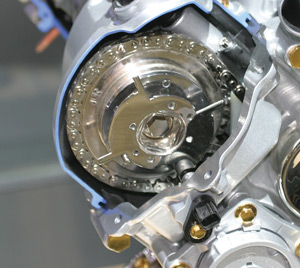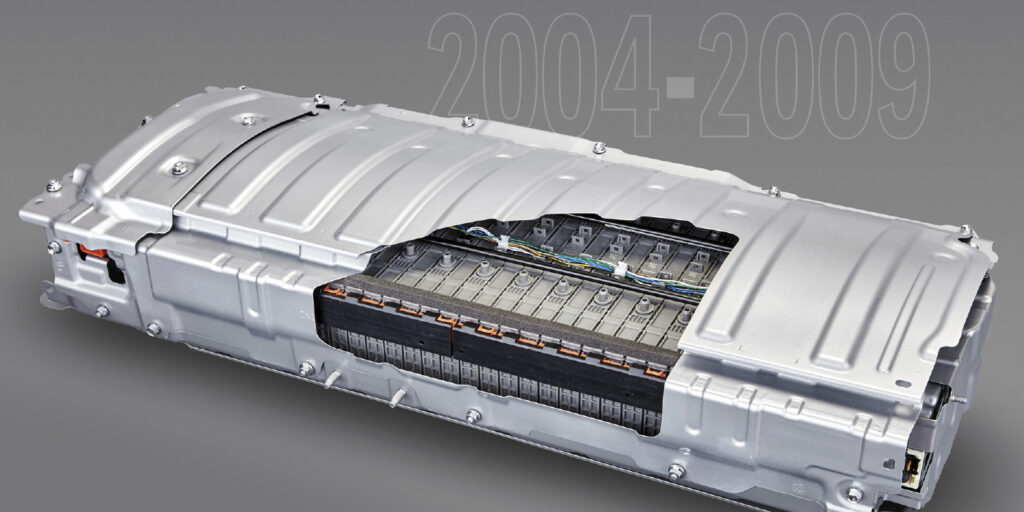 Before delving into cam and crank sensors, maybe we should talk about what these sensors replaced — the distributor. It was one of the most common components on cars for more than 100 years. This spinning apparatus took the actions of a lobed wheel and transferred that mechanical movement into opening and closing a set of points, where one side was grounded and the other was isolated to the positive voltage (or the opposite for positive-grounded vehicles). Condenser: when the points open and the magnetic field collapses it also induces a current in the primary as well. It’s not very much because there are only a few windings in the primary, but it’s enough to jump a small air-gap, such as the one between the just-opening points in the distributor. That tiny spark is enough to erode metal away from the points and you’ll ‘burn’ the points. It prevents the points from arcing and prevents coil insulation breakdown by limiting the rate of voltage rise at the points. Thus, a high enough current/voltage level would be developed and produced enough to create a spark at the spark plug gap.
Before delving into cam and crank sensors, maybe we should talk about what these sensors replaced — the distributor. It was one of the most common components on cars for more than 100 years. This spinning apparatus took the actions of a lobed wheel and transferred that mechanical movement into opening and closing a set of points, where one side was grounded and the other was isolated to the positive voltage (or the opposite for positive-grounded vehicles). Condenser: when the points open and the magnetic field collapses it also induces a current in the primary as well. It’s not very much because there are only a few windings in the primary, but it’s enough to jump a small air-gap, such as the one between the just-opening points in the distributor. That tiny spark is enough to erode metal away from the points and you’ll ‘burn’ the points. It prevents the points from arcing and prevents coil insulation breakdown by limiting the rate of voltage rise at the points. Thus, a high enough current/voltage level would be developed and produced enough to create a spark at the spark plug gap.
Old news to some, and ancient history to others, but what does that have to do with the modern cam and crank sensors? Maybe nothing in regard to how the spark is generated these days, but a lot more can be done with a cam or crank sensor than just to create spark.
Today’s cars have several different methods of producing spark and setting fuel injector pulses. All of the sensors create a nominal voltage by way of what is referred to as a “Hall effect,” either from an external magnet mounted on the cam gear or body of the distributor housing, or it has its own small magnet inside itself and the Hall effect is created by passing the sensor over or near a piece of slotted metal.
To lend some clarity and explanation, without getting into specifics for each and every model out there (because each system can have its own precise reasons for its particular use of either the cam or crank sensor), the cam sensor reads relative cam position and the crank sensor reads the relative position of the crankshaft. Both can be used to set the injector pulse or direct ignition timing. In some cases, the crank sensor is mounted on the harmonic balancer and reads off the toothed gear just behind the pulley. In other applications, the crank sensor is mounted on the flywheel. And, on some vehicles, the crank sensor may even be referred to as a TDC (top dead center) reference signal.
But, to add even more confusion, there are many engine setups out there that use multiple-cam sensors, from import to domestics, and, in each case, the main goal of the sensors is to bring a precise sequence to the injection and/or the ignition system. This preciseness is one of the many factors that allow today’s engines to have higher fuel economy, better performance and lower emissions.
Nissan V6 engines, for example, have one on each cam (depending on year and engine style). On these engines, the two sensors work together to read cam positions but, along with that, the cam signal is also used as a “revolution counter.” It takes the revolution count and compares it to the input speed sensor for the transmission and determines whether or not the two numbers are within its parameters for proper operation.
Example: A 2003 Maxima makes its way into your shop, with the owner complaining of a hard-to-start, long-cranking engine and a sluggish transmission. Chances are, there is a service code for a faulty cam sensor, but don’t be alarmed if there isn’t.
Start by checking the cam sensor values on the scanner to see if there is a large difference between the two sensors. (Both sensors are also the same part number.) If the values are different, you might have found your problem. (There still are other possibilities, but I’m not going to get into those.) A quick check of the transmission wiring diagram will confirm which of the two cam sensors is tied in with the transmission computer along with the engine PCM.
One more thing to think about, these sensors are “locked” into position so their relative “pick-up” point is also fixed. Timing adjustments are a thing of the past; so if the spark or the injection seems to be out of line or out of sequence, further diagnosis will be needed.
I ran across this very problem a few years ago. Another shop had replaced a motor in a small import SUV and, while exchanging the motor, the tech also switched out the flywheel. The replacement engine had a different flywheel on it; I was never told whether it was from a different year or a different transmission setup. But what was clear was that the TDC sensor was almost a complete revolution off of the compression stroke, meaning… since the sensor is “fixed” into position, there was no way to move the spark back in line with the piston position. The job had to be started all over again with the correct flywheel being installed. (Luckily, the other repair shop took care of that; I just had to find out what was wrong with it.)
So, in a nutshell, understanding the cam and crank sensors on the particular engine you’re working on will lead to a quicker diagnosis and faster repair times.













